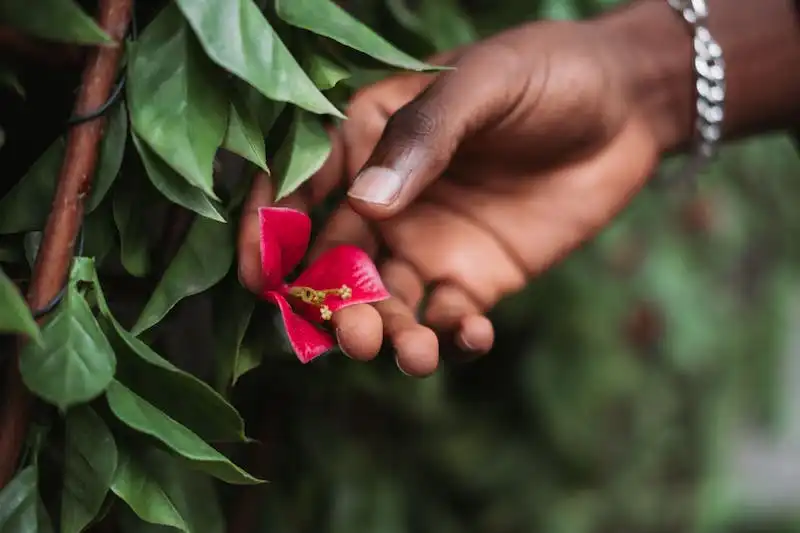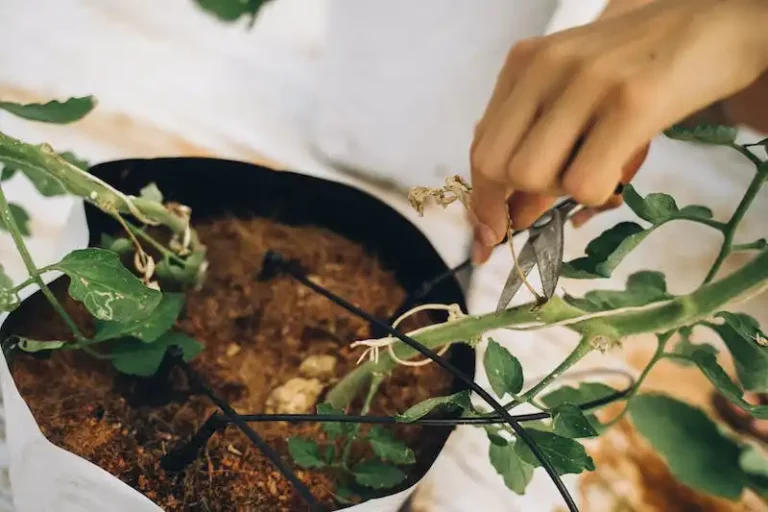If you are a plant lover, you might already be familiar with peperomia, a genus of beautiful and diverse plants. There are over 1,500 known species of peperomia, and their popularity has been steadily growing. One of the reasons why peperomia is so loved by plant enthusiasts is the wide range of varieties available, with each type offering its own unique beauty.
Peperomia plants come in various shapes, sizes, and colors, making them a great addition to any indoor or outdoor space. From compact houseplants to trailing groundcover, peperomia types can adapt to different environments and light conditions, making them easy to grow for both beginners and experienced gardeners.
One of the most charming characteristics of peperomia varieties is their foliage. Some peperomia types have small, round, button-like leaves, while others have elongated teardrop-shaped leaves. The leaves can come in shades of green, purple, or even golden, and many of them feature beautiful patterns, such as variegated stripes or furrowed textures.
Among the many peperomia varieties, one of the most popular is the Peperomia Rubella. This type of peperomia has small, dark-green leaves with parallel, red stripes, giving it a unique and eye-catching appearance. Another beloved variety is the Peperomia Isabella, known for its compact growth and pearly-white foliage. The Peperomia Cupid has heart-shaped leaves that start off darker and become lighter as they mature, giving it a lovely ombre effect.
Peperomia plants are not just admired for their foliage, but they also produce small, inconspicuous flowers. These flowers are usually held in slender, leafless stems called inflorescences and can add an extra touch of beauty to your peperomia plant. While the flowers themselves may not be the main attraction, their presence adds an interesting dimension to the overall appearance of the plant.
Whether you are a dedicated collector or a beginner looking to add some greenery to your home, peperomia plants are a great choice. With their unique foliage, compact growth, and adaptability to different conditions, they are sure to bring beauty and life into any space. So why not explore the vast world of peperomia varieties and find the ones that speak to you?
Peperomia Peperomia spp
Peperomia is a genus of tropical herbaceous plants in the family Piperaceae. It is native to Central and South America. There are many beautiful varieties of peperomias, each with its own unique features and characteristics.
One of the most striking varieties is the variegated peperomia. This type has lighter and darker green leaves with beautiful patterns of white or cream variegation. Another popular variety is the watermelon peperomia, which has leaves that resemble the skin of a watermelon, with dark green and lighter green stripes.
Peperomia japonica is a trailing variety that is often used in hanging baskets. It has small, round leaves with a ripple-like texture. The red-edge peperomia is another attractive variety, with dark green leaves and red edges. It is considered perfect for adding a touch of color to any indoor space.
Peperomia caperata is a type of peperomia that is known for its heart-shaped leaves and distinctive texture. It is often referred to as the “emerald ripple” peperomia. Another interesting variety is the string of buttons peperomia, which has long, trailing stems with small, button-like leaves. It can be grown in a hanging planter or allowed to cascade down from a windowsill.
Peperomia obtusifolia, also known as the baby rubber plant, is a popular indoor plant. It has thick, dark green leaves and can grow to a height of 1-2 feet. Peperomia scandens, also called the “trailing jade,” is another variety that is commonly grown indoors. It has heart-shaped leaves and can be trained to climb or trail.
Peperomias are easy to propagate, making them a favorite amongst plant enthusiasts. They can be propagated by stem or leaf cuttings, and new plants will quickly develop roots and start growing.
In addition to their beauty, peperomias are also valued for their air-purifying qualities. They can help remove toxins from the air, making them a great addition to any indoor space.
Whether you’re a beginner plant enthusiast or an experienced gardener, there is a peperomia variety out there for you. Their unique foliage and easy-care nature make them a popular choice for plant lovers everywhere.
Source: ‘Peperomia – The most beautiful varieties’ – https://www.example.com
Our favorite varieties
When it comes to Peperomia plants, there are plenty of beautiful varieties to choose from. Here are some of our favorites:
| Native | Polybotrya | Japonica |
|---|---|---|
| A popular variety that adapts well to most growing conditions. | Rapidly growing with variegated leaves that have a beautiful texture. | A member of the Piperaceae family, it is commonly found in Florida. |
| Peperomia | Ripple | Verticillata |
| Also known as “Cupid Peperomia,” it is perfect for a windowsill or terrarium. | Its dark-green leaves are complemented by red-edge stems. | One of the most popular varieties, it has stunning veins that glow green. |
| Angulata | Bibi | Ginny |
| With furrowed leaves, this variety adds an interesting texture to any landscape. | A small herbaceous plant that only grows up to an inch tall. | Also known as “Red-Edge Peperomia,” it has vibrant red edges on its leaves. |
These are just a few of the many beautiful Peperomia varieties available. Each variety has its own unique characteristics and can add a touch of beauty to any indoor or outdoor space. Take the time to learn more about these plants and find the perfect Peperomia variety for your home or garden!
Beetle Peperomia
The Beetle Peperomia is a beautiful and popular variety of Peperomia. It is named for its unique leaf shape, which resembles a beetle. This variety is known for its small-leafed, herbaceous plants that grow in a clump-like formation. With their beautiful variegated foliage, Beetle Peperomias make a perfect addition to indoor gardens.
The leaves of the Beetle Peperomia have a teardrop shape and a beautiful variegation of green and gold. Some varieties may have red edges or stripes, adding an additional striking feature to their appearance. The foliage has a textured surface, giving it a unique and beautiful look.
Beetle Peperomias are easy to grow and thrive in a variety of environments. They prefer well-draining soil and should be watered when the top inch of the soil feels dry. These plants are relatively small, reaching a maximum height of about 5 inches, making them perfect for small spaces like terrariums and hanging baskets.
These plants grow rapidly and can be easily propagated through stem cuttings or leaf cuttings. They can tolerate low light conditions, but they will thrive in bright, indirect light. Beetle Peperomias can also tolerate a wide range of temperatures, making them suitable for indoor gardens all year round.
The Beetle Peperomia is native to Central and South America, particularly Florida. It is commonly found in the wild, growing on rocks and tree trunks. In their natural habitat, they often grow together with other types of Peperomia, creating a beautiful and diverse ecosystem.
One of the most striking features of Beetle Peperomias is their flowers. They produce small, white flowers that are arranged in tight spikes. The flowers emerge from the center of the plant, creating a beautiful and eye-catching display.
Overall, the Beetle Peperomia is a beautiful and easy-to-grow variety of Peperomia. Its unique leaf shape and variegated foliage make it a popular choice among plant enthusiasts. Whether grown indoors or outdoors, this variety will add a touch of beauty to any garden.
Belly Button Peperomia
The Belly Button Peperomia, also known as Peperomia Angulata, is a beautiful and easy-to-care-for type of Peperomia plant. It gets its name from the small, round, and compact leaves that resemble belly buttons. The leaves have a dark green color with tight veins and are sometimes adorned with golden stripes or red undersides.
This Peperomia type is native to South America and is commonly found in the wild growing as a trailing plant or in the crevices of trees. It is also a popular choice for terrariums and indoor gardens due to its compact growth habit and ornamental appeal.
The Belly Button Peperomia is a low-maintenance plant that adapts well to different growing conditions. It can be easily propagated through stem cuttings, making it a great option for beginner gardeners. To propagate, simply cut a stem just below a leaf node and place it in moist compost or water until roots develop.
In its natural habitat, this Peperomia can grow up to 4 inches (10 cm) tall, but in indoor settings, it usually reaches a height of about 2-3 inches (5-7 cm). It prefers bright, indirect light, and should be protected from direct sunlight to prevent leaf burn. The plant also thrives in well-draining soil and requires watering when the top inch of the soil feels dry.
The Belly Button Peperomia is a great addition to any plant collection due to its unique leaf shape and colorful appearance. It pairs well with other Peperomia varieties such as Peperomia Rubella or Peperomia Caperata, creating a stunning display of different leaf shapes and colors. With its compact size and low-maintenance nature, the Belly Button Peperomia is sure to add beauty and charm to any indoor space.




